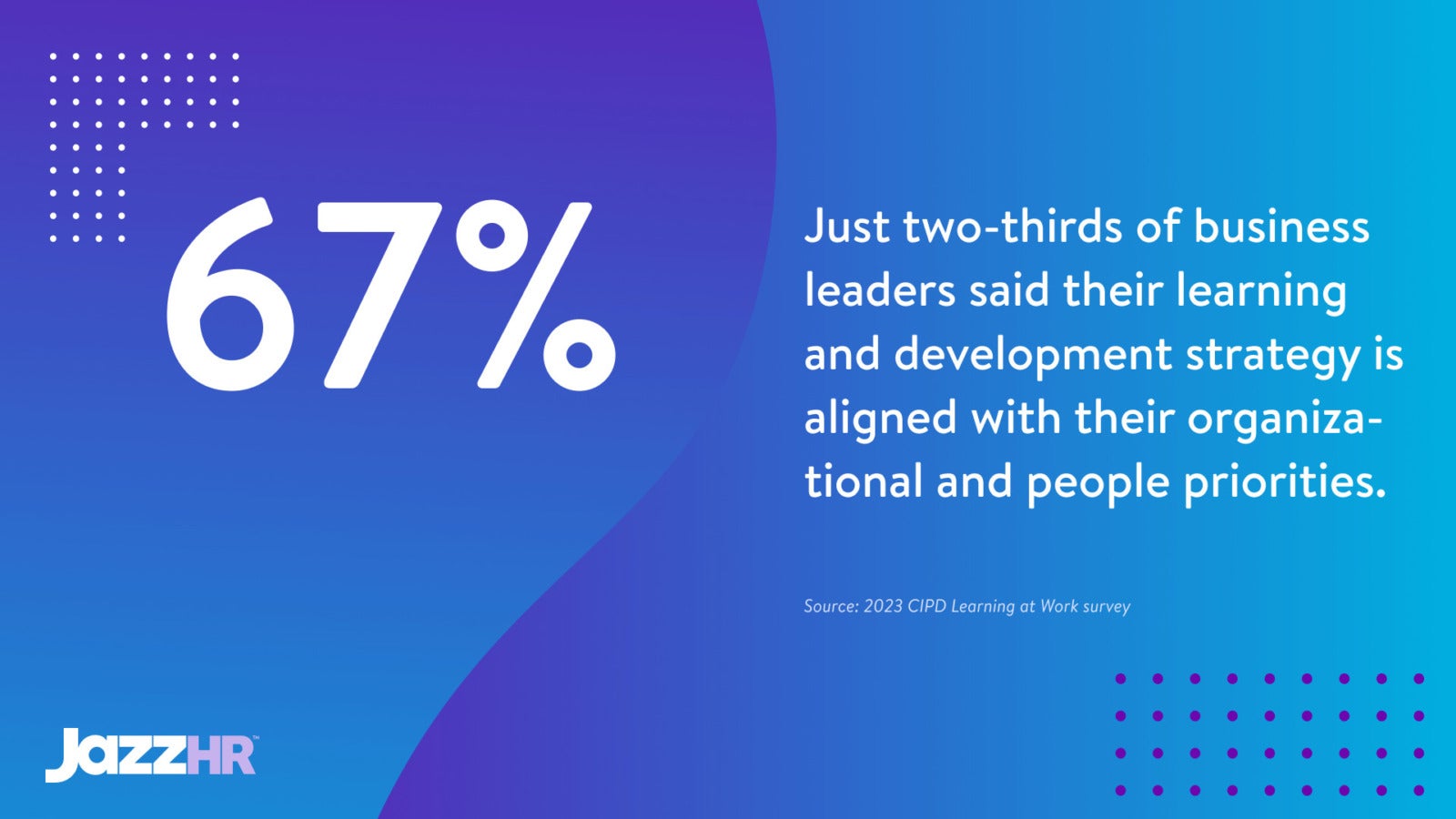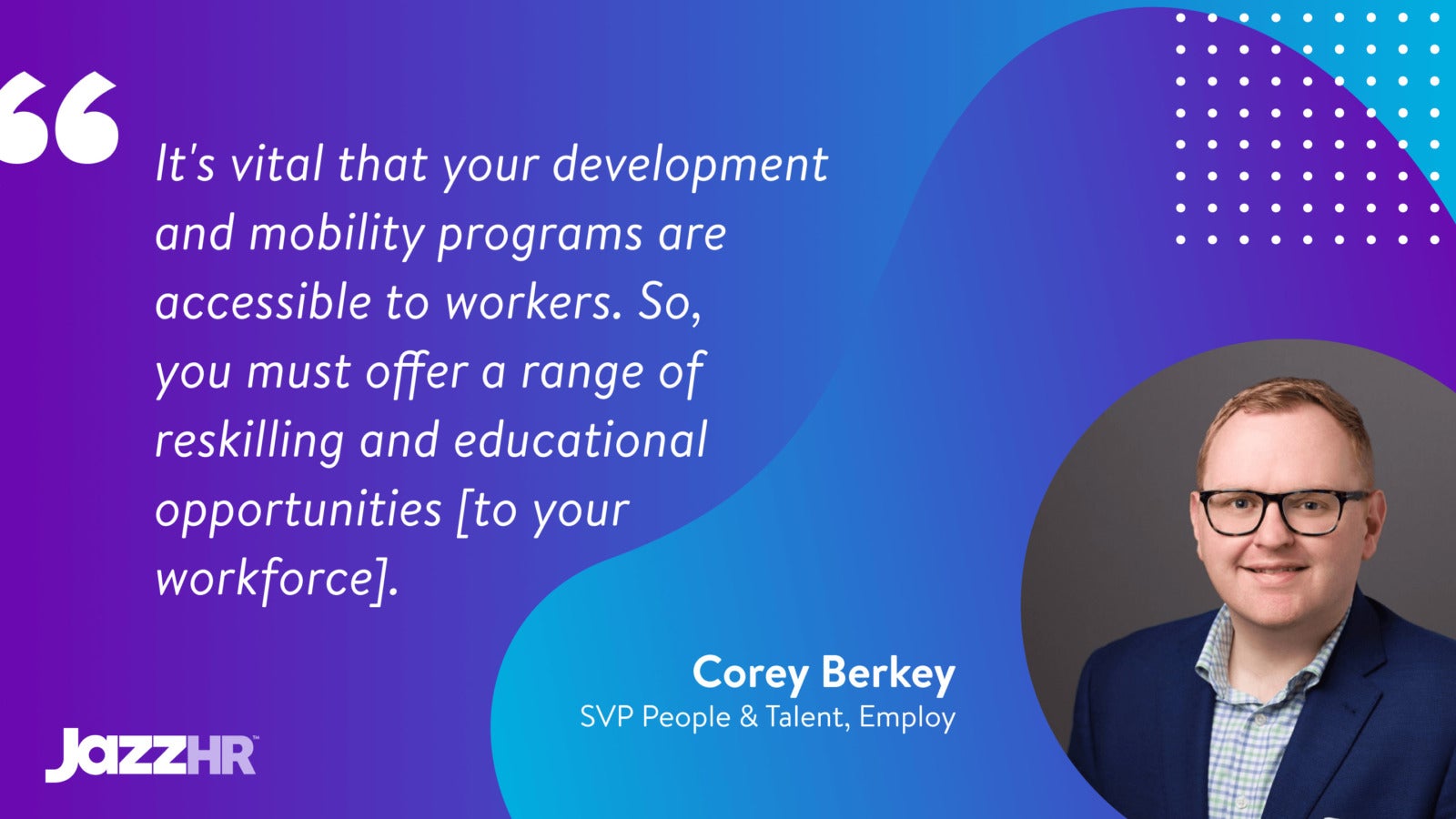Albert Einstein once said, “When you stop learning, you start dying.” In other words? Learning experiences are at the heart of everything we do on both a personal and professional level.
Regarding the latter, the moment we cease with learning — or, as it’s known in the business space, training and development — we fail to compete with those coming up behind us.
- In the workplace, it can be tricky for human resource management teams and hiring managers to identify training and development opportunities both during and after the onboarding stage.
And yet, to ensure employees remain engaged and successful at your company, it’s critical to continuously recognize their potential, identify unique skills and knowledge, and nurture these workers’ development through dedicated, ongoing “blended” learning and job training sessions.
That is to say, prioritize employee training and development opportunities — ones that can improve employees’ day-to-day work performance, give them the expertise needed to take on new roles down the line, and enhance the odds of retaining top-performing workers long term.
4 ways to identify training and development opportunities during your new-hire onboarding process
“It’s vital that your development and mobility programs are accessible to workers,” Employ SVP People & Talent Corey Berkey recently wrote for Forbes. “So, you must offer a range of reskilling and educational opportunities [to your workforce].”
Translation? Your HR team and people managers must work together to build distinct skills training methods and programs that empower employees to realize their desired level of professional growth and prepare themselves to take on new and challenging jobs at the org in the future.
Here are four tips to help you discern which types of training programs that are designed to boost employee performance in the long run are worth exploring early on in your onboarding efforts.
1) Conduct regular check-ins with new hires
The onboarding stage is a great opportunity for new hires to understand your entire business. They can get to know more about other departments, not only the one you hired them for. By conducting regular check-ins, you can understand where employee interests lie and develop mutually beneficial career goals.
When an employee expresses curiosity in another area of the business, it’s worth noting this down for later. Should you hire in the future, your strongest candidates might come from within.
2) Set up custom personal development plans
Personal development plans are a great way to help employees feel more valued and invested in your business.
Set up personal development plans with your staff and review them on a regular basis. Not only does this improve communication with your team, but it also helps identify any work-related training they might need.
3) Gauge interest in a new mentoring initiative
Internal, cross-departmental mentoring is a great way to share knowledge across your business.
A mentoring program helps new hires and seasoned employees alike learn about other parts of the business. It’s also a great way to provide insight into how an employee’s specific skill set fits into the wider picture of the business.
By closely aligning staff with a mentor, you can help develop skills, as well as identify any training or development requirements needed to further someone’s career.
4) Factor in business goals with training options
By analyzing and understanding what the overall goals of the business are, you can gain clarity over what areas of your business require further training to help reach that next benchmark.
For instance, you might discover that some teams have duplicated skillsets, while others lack knowledge about your industry. With this in mind, you can begin offering personalized training programs that address these needs.
Tailoring your training and development program to the career and growth aspirations of your workforce
The 2020 Workplace Learning Report by LinkedIn found 94% of employees would stay with a company longer if there was an investment in learning and development. What’s more, 68% of employees say training employees is a company’s most important policy.
Identifying how employees learn is a great way to make training and development as effective as possible. Some employees will learn best collaboratively through workshops, while others will require more independent study.
By understanding how each member of your team best absorbs information, you can begin tailoring your training and development. This ensures that staff put their newfound skills into practice and, ultimately, help the business grow.
While HR and people managers focus on training and development of existing employees, your talent team needs the right tech to find future employees. Schedule a JazzHR demo today to learn about our ATS.








